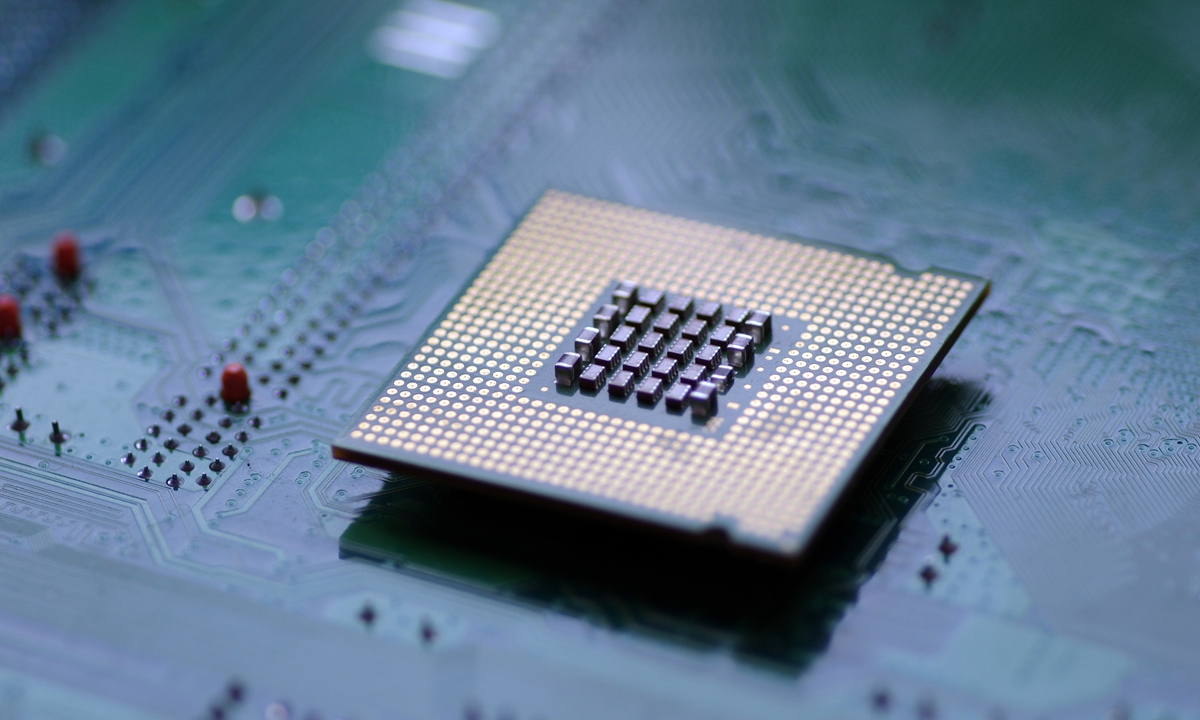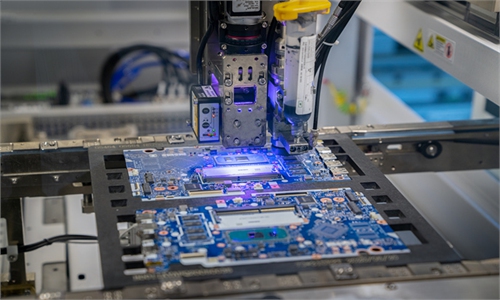
chip Photo:VCG
China on Tuesday announced that it would remove tariffs on raw material and other products that cannot be produced domestically but are needed by next-generation monitor manufactures, in a move, analysts say, aimed at further bolstering China's semiconductor supply chain.
From January 1, 2021 to December 31, 2030, producers of thin film transistor liquid crystal displays (TFT LCD), active-matrix organic light-emitting diode (AMOLED) display devices and micro-LEDs will be exempted from import taxes for raw materials and consumables that cannot be produced domestically, or in cases where domestic supply falls short of demand, according to an official notice.
Enterprises that import new equipment during the period will be able to pay value-added tax on their imports in installments within six years after the first items were imported, with no overdue payment fees, said the notice released by China's Ministry of Finance, the General Administration of Customs and the State Administration of Taxation.
It is timely for China to issue policies to support the next-generation display industry, which plays a very important part in building the semiconductor industry chain, Xiang Ligang, director-general of the Beijing-based Information Consumption Alliance, told the Global Times on Tuesday.
"It shows that China encourages imported materials and equipment to enter the market to step up the nation's self-sufficiency in a bid to establish China's own semiconductor industry chain and prevent key technology from being strangled by the US," Xiang said.
TFT LCDs, AMOLED display devices and micro-LEDs are used in an increasing range of applications, giving products better visual presentation, contrast, response times, and energy efficiency. For instance, micro-LEDs are especially suitable for making smart watches and augmented reality displays.
"Next-generation monitors have a great market opportunity, since they can be used in various intelligent terminals. In the past five years, more and more enterprises have made such displays," Xiang added.
Imported raw materials account for over 60 percent of display panels in the next-generation display industry at present, said Wang Dongsheng, marketing director of an LCD manufacturer in Central China's Hubei Province.
"The favorable policies come as good news for the industry," he said. "They are expected to give a boost to the technological innovation of upstream manufacturers, enhance the competitiveness of export enterprises, and accelerate the application of new intelligent terminal display devices," Wang said.
There are broad applications for next-generation display devices driven by China's consumption upgrading and the dual-circulation economic development paradigm with a greater focus on the domestic market.

